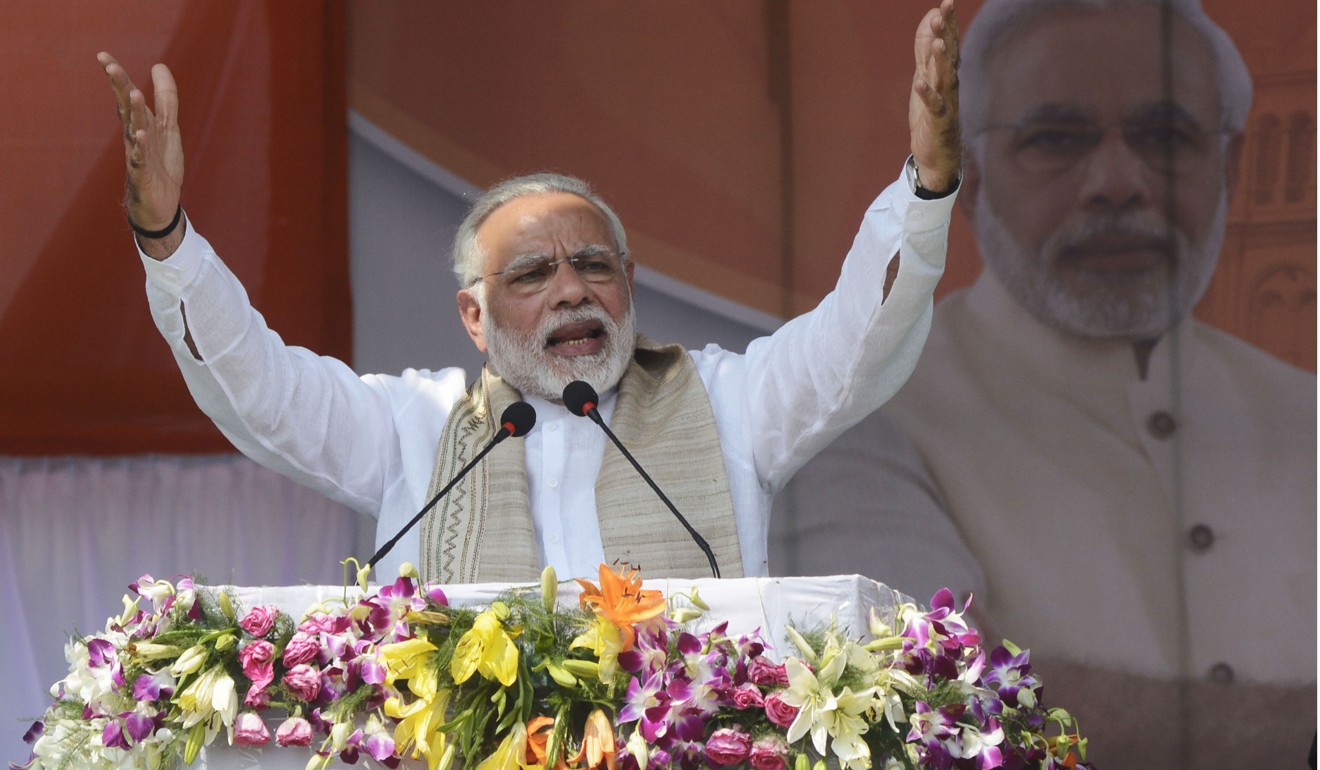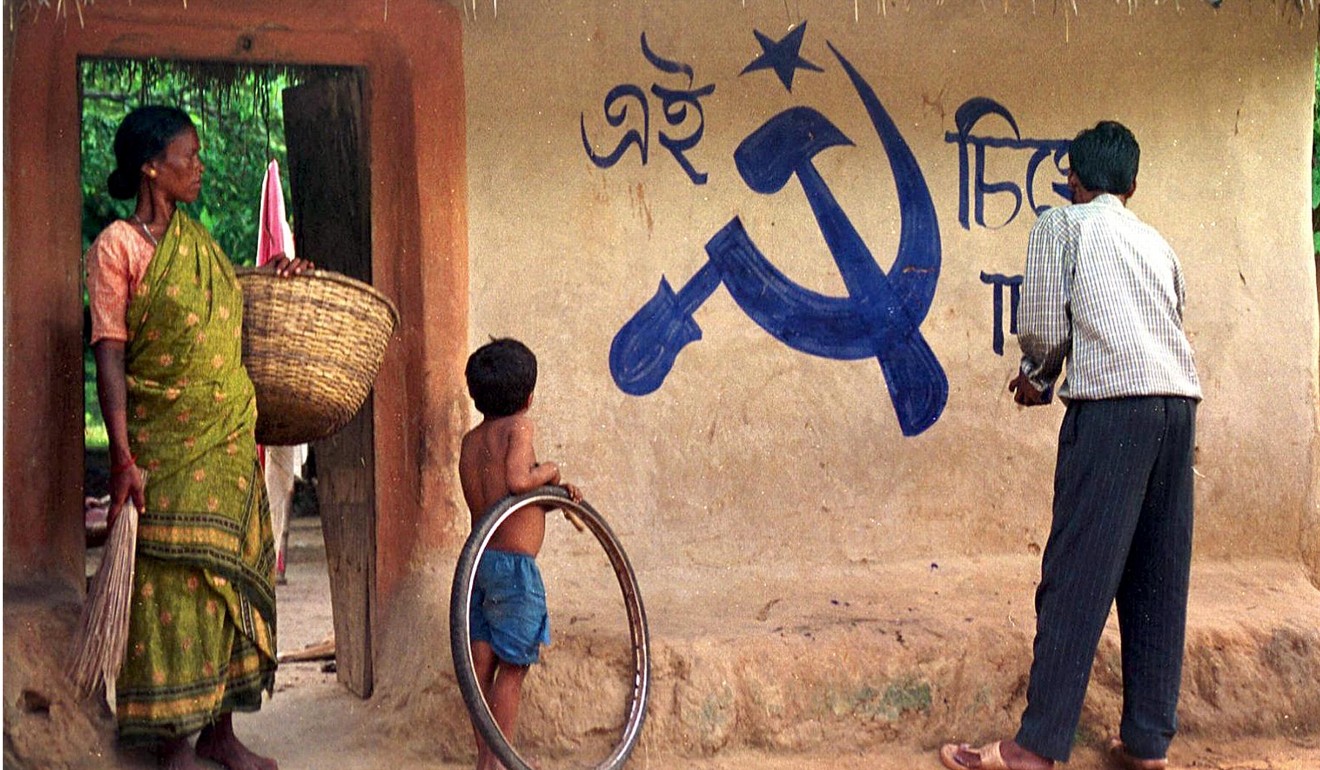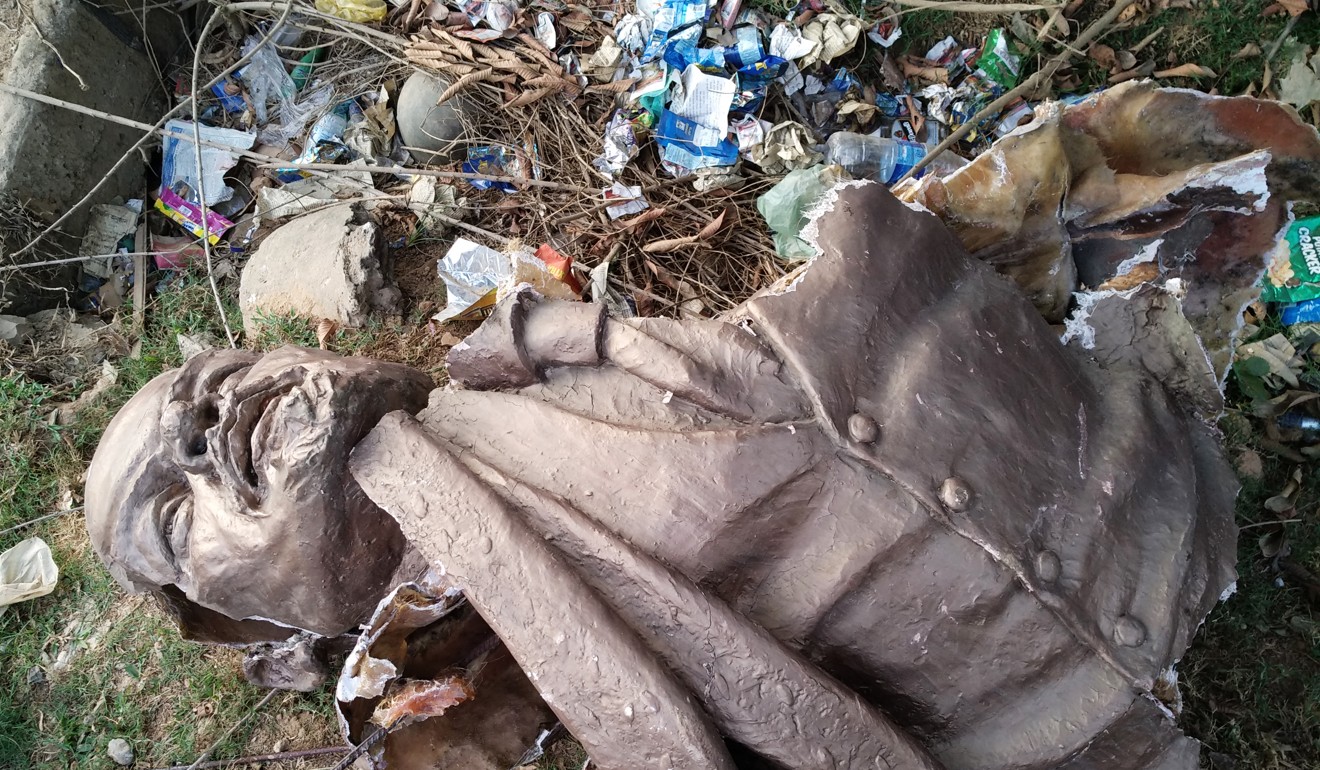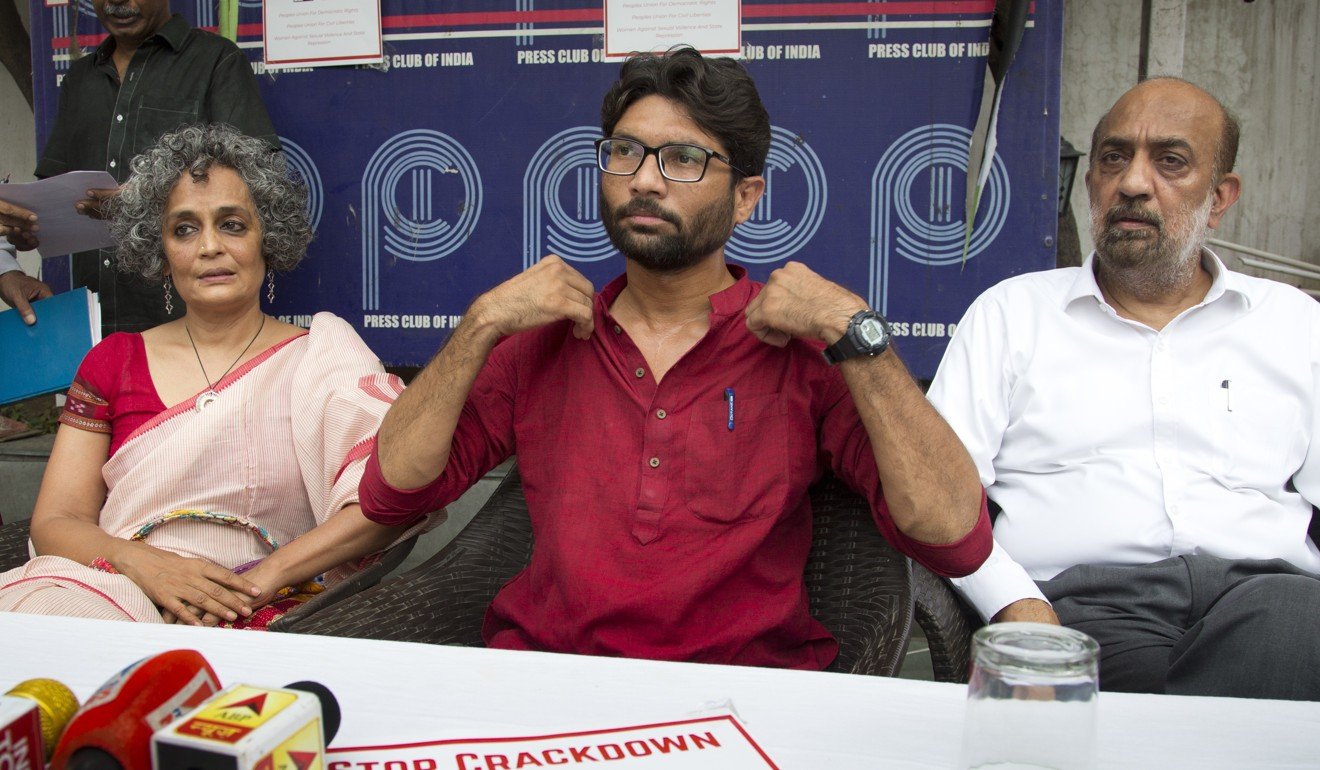
Communism in India: dead or just waiting for young saviours?
- The country’s leftist movement has been decimated by Prime Minister Narendra Modi’s electoral success, reduced to a mere spectator amid this year’s frenzied campaigning
- But many communists are pinning their hopes for a revival on a new breed of pragmatic young leaders

At an election rally last Thursday Indian Prime Minister Narendra Modi accused West Bengal Chief Minister Mamata Banerjee of nepotism. Just 8km away, at her own event, Banerjee retorted that Modi had no right to talk about family given his estrangement from his wife, who for years he refused to acknowledge.
The escalating war of words is part of efforts to wrest control of crucial West Bengal – the state with the third most seats in the Indian parliament’s lower house.
But amid the frenzy of campaigning, the once-powerful communist party that ruled the state for 34 consecutive years before 2011 has been left in the dust, reduced to a mere spectator.
All major surveys indicate the Communist Party of India (Marxist) (CPI(M)) will at best win one seat from West Bengal in this election. In 2004, the organisation – the biggest of the country’s two main communist parties – won a hefty 26 of the 32 seats it contested in the state.

The 2004 poll marked a two-decade high for the alliance known as the Left Front, of which the CPI(M) is a prominent member, along with the Communist Party of India (CPI), the All India Forward Bloc and the Revolutionary Socialist Party. The front used its presence in parliament after 2004 to prop up the Indian National Congress-led government. It managed to significantly influence policy in those four years despite choosing not to have any ministers.
But a decade later the front saw itself swept away in the electoral wave that brought Modi to power. Both the CPI(M) and CPI recorded their worst ever performances in the 2014 general elections, and the Left Front won only 12 seats. Outside the states of West Bengal, Tripura and Kerala, it gathered less than 1 per cent of the vote. The CPI’s reputation as one of the six national parties of India came under severe threat.
PLOTTING A PATH BACK TO POWER
Last October the CPI(M) spelled out the left’s strategy for contesting Modi and his political machine in the 2019 general elections.
“There cannot be an all-India alliance to fight the Bharatiya Janata Party (BJP). We have to therefore work out statewide election tactics based on the overall electoral tactical line. We should rally the secular and democratic forces in the different states,” the CPI(M) said.

But the left now finds itself dreading the release of this year’s results – it is the first time in more than two decades that the alliance faces a general election without holding power in two of its three bastions – West Bengal, Tripura and Kerala. The previous communist Tripura state government, in place for 25 years, was replaced by one led by the BJP in 2018. Kerala now remains the only state with a leftist government in power.
The rot in West Bengal concerns the CPI(M) more, due to the state’s size and influence. Two mass uprisings in 2007 and 2008 against land acquisitions for industrial projects approved by the CPI(M) government came ahead of a win in 2011 for Banerjee’s All India Trinamool Congress.
V. Krishna Ananth, associate professor of history at Sikkim University, blames the West Bengal branch of the CPI(M) for the party’s loss of power. He said it did not respect democratic traditions and failed to politically educate its support base.
“The CPI(M) in West Bengal should have internalised lessons about cooperative farming from its experience of carrying out land reforms … Industries are not the only means of development,” he said.
YOUNG SAVIOURS?
However, it is not all doom and gloom for the left. Many communists see the key to a renaissance as fresh young leaders with a more pragmatic approach. Five years of Modi government has seen a rise in student activism in support of their cause, most of it centred around Delhi’s Jawaharlal Nehru University (JNU) and Hyderabad Central University.

Kanhaiya Kumar, a CPI member arrested for sedition while president of the JNU student union, is the Left Front’s most prominent candidate in this election. Jignesh Mevani, a member of the previously untouchable dalit castes who rose to prominence resisting caste-based discrimination and violence, is now an independent state legislator in Gujarat.
The communist parties have often been criticised for not understanding or for ignoring issues related to caste in India. The student activism of the past five years however has placed considerable emphasis on the subject while being guided by communist ideology. In the past, CPI(M) general secretary Sitaram Yechury described this combination as a “red star against a blue sky” – blue being the colour associated with dalit politics.
“I think the person who best emphasises this synthesis is Jignesh Mevani himself,” said Shehla Rashid, vice-president of the JNU student union, who was elected alongside Kumar. Rashid, a former member of the student wing of the Communist Party of India (Marxist-Leninist) Liberation – a faction of the Communist Party of India (Marxist–Leninist), which split from the CPI(M) in the 1960s – said the situation in India is similar to the rise of progressive movements elsewhere in response to the ascendancy of far-right leaders. She said she believed the left in India would evolve.
“There won’t be one vanguard party. The left is becoming more mainstream … There are traditional left dogmatisms that will have to be shunned; theory will have to flow from practice,” she said.
BRANCHING OUT
There have also been indications that the left can gain a new lease of life away from its traditional bastions and long-held positions. The states of Rajasthan and Maharashtra were among those that saw recent massive protests by farmers over debts and the collapse of commodity prices, and the farmers’ body affiliated with the CPI(M) was at the forefront of these demonstrations. In elections for Rajasthan’s state assembly last year, the CPI(M) won two seats it had never won before.

Vijoo Krishnan, joint secretary of the CPI(M)’s All India Kisan Sabha and a former president of the JNU student union, said the CPI(M) was on a growth trajectory in Rajasthan, Himachal Pradesh, Haryana, Karnataka and Maharashtra, thanks to peasant movements and student activism.
The left has also learned a few political lessons during Modi’s tenure.
“Different kinds of solidarities have emerged in the last five years; solidarities which may have been inconceivable earlier. In the past, we would not have had a [campaign] truck with the rich farmers, the landlords. However, this government’s policies have brought us together,” Krishnan said.
LET A HUNDRED FLOWERS BLOOM
Rashid added: “I think India needs a new progressive party at the centre that can formally connect all the progressive movements across the country.”
She said the likes of Mevani should lead such an effort.
Krishnan believed retaining and organising the support of peasants and youths would be a test of his party’s capabilities.
“Diverse sections of society are coming out and questioning the government. The question is, can they be channelised into our stream alone? That is the test,” he said.
Doraisamy Raja, national secretary of the CPI, has said 2019 would be a critical year for the left. “Even after these elections, we will have to find ways to connect with the youth.”
Sikkim University’s Ananth said the left should give itself more freedom to search for solutions.
“It won’t happen with the present set of leaders: they are old and tired,” he said.
But the alliance would not be wiped out, and a more spontaneous – not doctrinaire – strain of the left would emerge, Ananth added.
“We are probably at a stage when we need a hundred flowers to bloom. Let’s explore and explore with joyful, spontaneous freedom … This movement is not dead.”